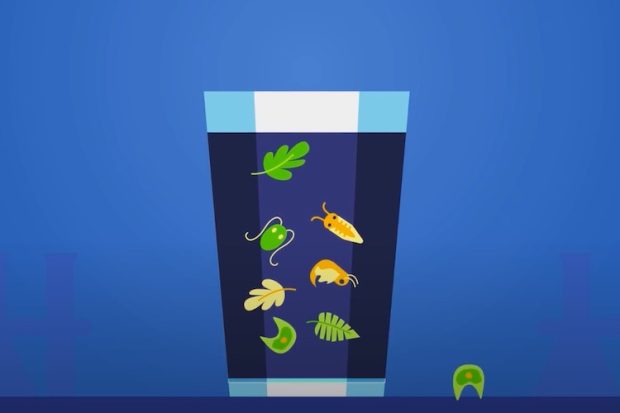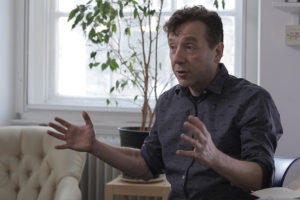ATLAS Experiment
Physicist Jonathan Butterworth on the collisions of particles, the Large Hadron Collider detectors, and how to...

In October Functional Ecology published an article called ‘Does morphology matter? An explicit assessment of floral morphology in sexual deception’. We asked one of the authors, Dr Marinus de Jager from Stellenbosch University, to comment on this study.
Of the myriad ways that flowering plants entice animals to act as their pollinators, sexual deception has to rank among the strangest and most intriguing. In our study, we investigate the role of floral morphology in sexually deceptive orchids. These plants are already well known for their remarkable ability to mimic the scent, or sex pheromones,of female insects in order to attract sexually motivated male pollinators. For the first time, we experimentally show that visual traits of these flowers also play a key role in their pollination. Our results reveal that insect-like features on Australian orchids in the genus Chiloglottis match the females of their respective male wasp pollinators in size and color. This visual mimicry likely enhances the male’s perception that he has found a genuine female. To explore this hypothesis more fully,we offered two pollinating species a choice between a familiar orchid, which resembles their females and an unfamiliar orchid, which does not. The orchids used in this experiment, C. trapeziformis and C. valida, were selected because they both mimic the same sex pheromone, which is highly attractive to both pollinators. Since their scent is identical, any difference observed in mating behavior towards the two offered orchids would thus reflect differential responses of the pollinators to the visual elements of the flowers.We found that both pollinators exhibit significantly more mating behavior on the familiar orchid resembling their females,confirming the adaptive value of similarity between flowers and females.

Besides female mimicry, the overall shape and size of the flowers also appears to be under selection via male pollinator morphology. Since a flower can only be pollinated when a lured male makes contact with the flower’s reproductive structures, floral dimensions also need to match the size of the male pollinator’s body. If, for instance, the flower is too large, males might not make contact with the stigma or anthers,even when thoroughly deceived and displaying vigorous mating attempts. Our comparison of floral traits and male pollinator traits in this system revealed substantial overlap, suggesting these intriguing orchids may also be adapted to fit the morphology of their male pollinator. To examine this experimentally, we manipulated the size of flowers to determine if male mating behavior would decrease on flowers that had been shortened, relative to an unmanipulated control. These manipulations did not affect the production of sex pheromones, thus allowing us to explore the effects of floral size in isolation. Experiments revealed that the pollinator of C. trapeziformis exhibit significantly less mating behavior on shortened flowers, validating our prediction that floral size is likely under selection to match pollinator size. Flowers in Chiloglottisare thus adapted to the morphology of their male pollinators, through floral size, and the morphology of their pollinators’ females, via the small insect-like features present on their flowers.
Sexual deception in orchids was first described nearly a century ago (1916), and since the 1960’s the use of sex pheromones has been at the heart of this field of research.The discovery that these orchids mimic and reproduce the sex pheromones employed by receptive female insects in order to attract their mates, revealed a lure substantially more powerful than a simple promise of food. Sex pheromones represent private communication channels between members of the same species and male insects are extremely sensitive to the chemical compounds released by their females. With some orchids producing more of these compounds than true females, it’s no surprise males find these orchids irresistible. Attracting and even eliciting mating behavior from male insects, however, will not achieve pollination unless they make contact with the flower’s reproductive structures in the process. So while a flower’s scent will guide excited males to its location, floral morphology will likely determine whether mating behavior results in pollination or not.
While our recent work reveals the importance of flower morphology in the Australian genus Chiloglottis, there are many other sexually deceptive orchids that have not been investigated in this regard. Floral morphology has already been found to be a crucial factor in the pollination of sexually deceptive daisies in South Africa, and may be much more widespread in orchids than previously realized. We also require more information about the relative strength of selection exerted by pollinators on various components of flower morphology, and how this may interact with selection on floral scent. In the future, we hope to explore these aspects of sexual deception and to develop greater insight into the flower morphology of these fascinating plants.

Physicist Jonathan Butterworth on the collisions of particles, the Large Hadron Collider detectors, and how to...

Historian of science David Kaiser on clever provocations of a group of young physicists in Berkeley, quantum e...

Medical Scientist Brian Hoffman on the discovery of adrenaline, the “fight or flight response”, and the use of...